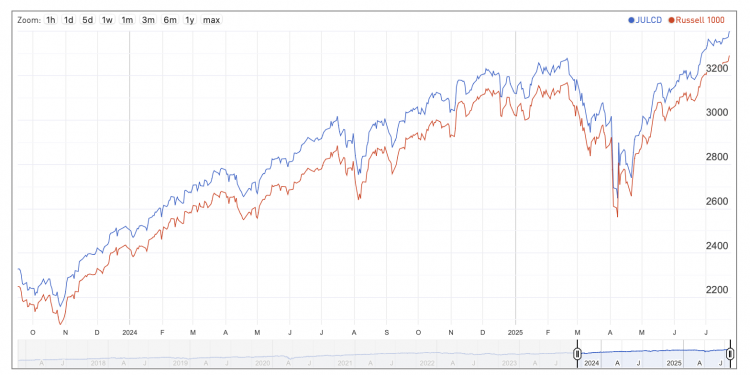Morningstar and JUST Capital Partner Seeds Share How Everyday Investors Can Make Better ESG Decisions
Over the last year, interest in sustainable investing resulted in another record-breaking inflow of cash to ESG funds. Findings from The Forum for Sustainable and Responsible Investment (US SIF) show that, as of 2020, sustainable investing assets accounted for $17.1 trillion – or 1 in 3 dollars – of total U.S. assets under professional management. US SIF’s research also found that dollars managed on behalf of retail investors comprise $4.6 trillion of this total, a 50% increase from 2018.
Investment firms are working to meet this uptick in demand from individual investors. Recent Morningstar research shows that asset management companies rebranded a total of 25 funds as sustainable in 2020, yet another record amount. Investors may have more options to invest sustainably than ever before, but navigating how certain funds earned their ESG or sustainable label remains a challenge. To Jon Hale, Global Head of Sustainability Research at Morningstar, the “sea change” in ESG investing in the last five years has made it more important for investors to be able to evaluate what makes a fund sustainable or not.
“We’ve got our management research analysts now asking every manager that they cover, ‘What is your ESG commitment? What role does ESG play in your portfolio?’,” Hale said on how Morningstar’s approach has changed in a recent LinkedIn Live conversation with JUST Managing Director of Investor Solutions Lorraine Wilson. Zachary Conway Founder and CEO of Seeds, a fintech platform built to help financial advisors create values-aligned portfolios, joined Hale to discuss what individuals wanting to invest sustainably should factor into their decisions and how advisors can help them navigate the growing ESG landscape.
You can watch the full conversation here and read on for our key takeaways.
Ask how ESG funds earn their label
With the rise of funds rebranding as ESG, Hale stressed the importance of investors understanding the approach behind the label – and how it aligns with their own personal values. He outlined the various approaches that ESG funds take from choosing to exclude certain companies (mainly fossil fuels) to using a risk-centered strategy to focusing on investing in a particular industry or grouping of companies.
“Any given ESG strategy might be anywhere on that map. It might be only focused on exclusions or ESG risk or it might, to some degree, have all of those approaches as part of its overall investment approach,” Hale said. “I don’t think that’s very clear to investors today.”
Wilson made the point that this even shows up in JUST Capital’s Rankings, as stakeholder data points are weighted according to the American public’s input in our polling. Hale also raised that many large asset managers are now claiming to integrate ESG across all offerings. What they mean, he said, is that they have ESG information available and are assessing it in terms of overall risk. And, while this is a step in the right direction for asset managers, this might not be what investors had in mind when choosing an ESG fund.
Pay attention to regulation and consolidation, but don’t wait for it to happen to invest
With ESG labels confusing investors, both Conway and Hale see value in efforts from coalitions to consolidate sustainability metrics. And, as ESG has become an increasingly important focus for the U.S. Securities and Exchange Commission (SEC), Hale emphasized the benefit of agreement and “uniform disclosure on climate and other material issues.” The SEC, Hale noted, seems likely to issue climate disclosure requirements this year. But both he and Conway pointed out that the challenge in standardizing or regulating other ESG metrics lies in their inherent subjectivity.
Hale compared this to the differences in opinion equity analysts may have on whether a particular stock is a buy, sell, or hold. They don’t always agree, he said, but that should be of interest to investors just as much as consensus would be. To Conway, the impetus currently lies with funds and financial advisors to disclose and understand ESG metrics and methodology for investors in the absence of regulation.
“As an industry, we worry about making perfect the enemy of good,” he said. “If you’re a 25-year old fund and now you’re an ESG fund, of course you need to articulate how in the world that’s the case – rather than relying, in some future state, on a regulatory body to make this binary decision on whether or not it’s true.”
Align with financial advisors on values from the outset
While investors await regulation, Conway emphasized that financial advisors are a resource to help them discern different funds’ ESG methodology. For advisors to be most helpful, however, he made the point that they should be asking clients about their personal values, and how they want them to drive their investments, at the very start of their work together. He stressed that advisors need to recognize a values-driven approach to investing is the expectation their clients will have – rather than the exception.
“The industry is still thinking of it as this separate and distinct asset class that you sprinkle on top of larger asset allocation when your client asks for it,” Conway said. “This, in general, will be how investing is done going forward. Thinking as an advisor, your clients will need to opt out rather than opt in.”

Bringing this point to life, Conway highlighted findings from a recent Yahoo Finance-Harris Poll survey on ESG investing. The poll of U.S. adults found that 77% of those who were familiar with ESG criteria take it into consideration when investing. At the same time, the survey highlighted that two-thirds of those polled weren’t familiar with ESG investing at all.
To Conway, this represents an opportunity for advisors. By breaking down labels, aligning on values, and monitoring regulation, they can help make ESG investing more accessible. For the everyday investor that means being able to approach the sustainable fund market with the clarity of how to wed personal values with ESG strategy – and not ignore returns in the process.
If you want to stay in the loop for more discussions with foremost experts in the ESG investing space as soon as they go live, be sure to follow Martin Whittaker on LinkedIn.






